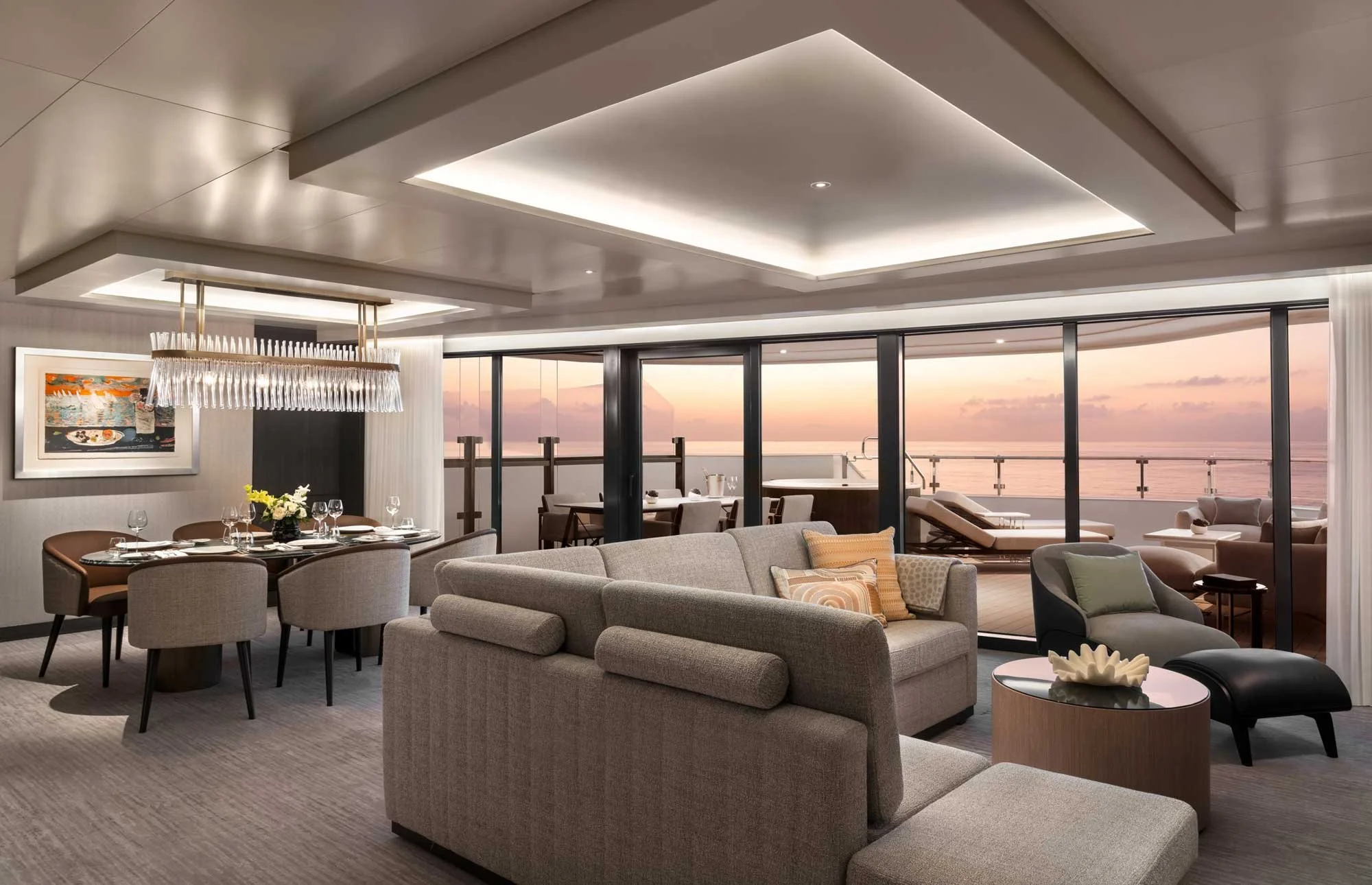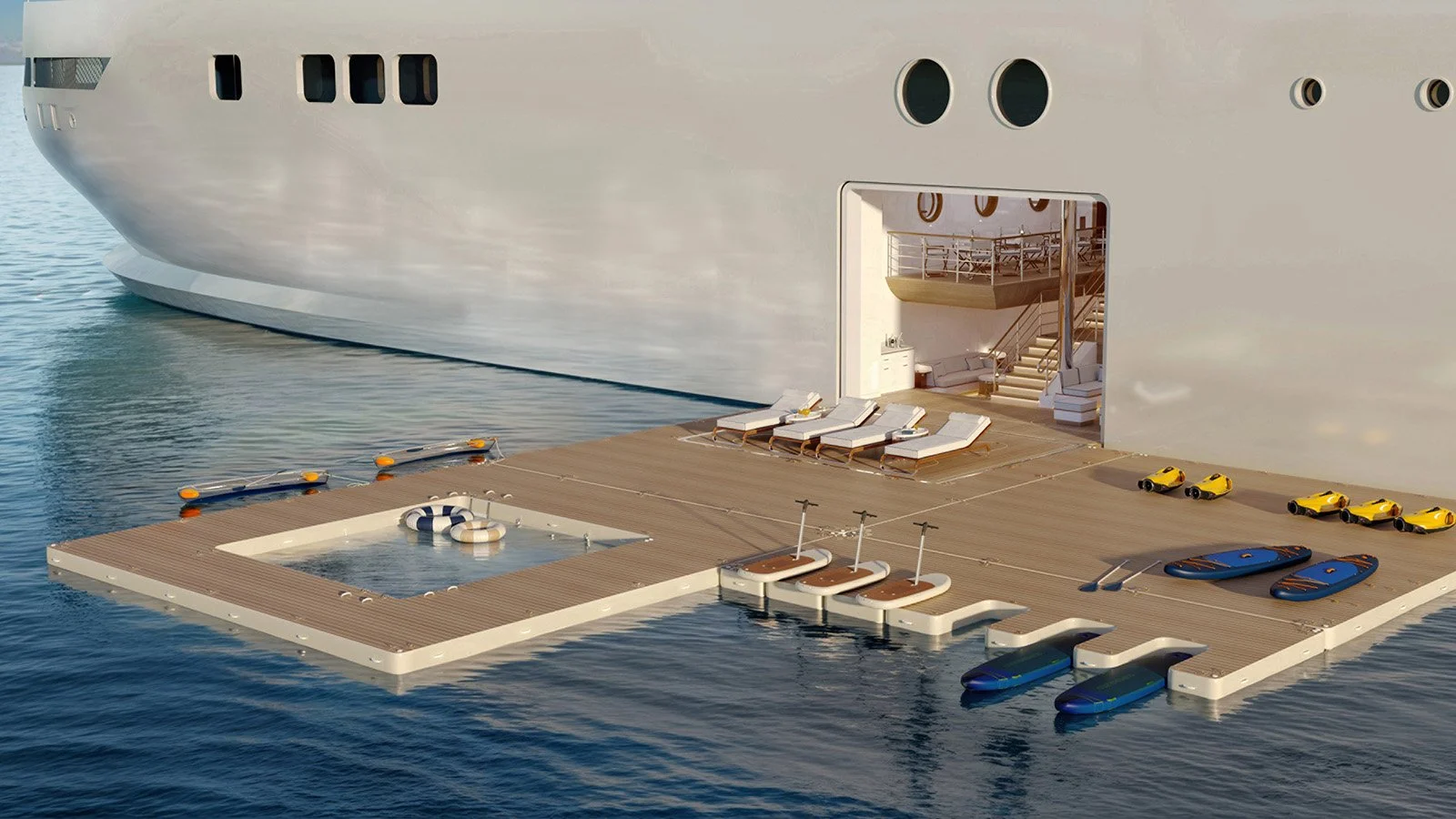How Ultra-Luxury Cruises Became the Hottest Thing in High-End Travel
TL;DR — The Cruise Glow-Up Nobody Saw Coming
Luxury travelers once swore they’d never cruise — now they’re booking private-butler suites on next-gen yachts from Four Seasons, Ritz-Carlton, and Orient Express.
The new class of small, design-forward ships blends five-star intimacy with billionaire-grade indulgence.
Forget buffets and bingo—today’s cruises are about caviar, camaraderie, and curated destinations you’ll never find on a mega-liner.









The Great Cruise Comeback
For years, the word cruise was shorthand for crowded decks, cheesy shows, and bottomless buffets. Not anymore. The newest generation of ultra-luxury ships has flipped the script — sleek, private, and dripping with style. These vessels look more like boutique resorts than cruise liners, designed for travelers who used to think cruising was beneath them.
Today’s elite aren’t avoiding the sea; they’re embracing it. They’re sipping Krug on teak terraces, hosting sunrise yoga on private decks, and soaking in marble tubs with the horizon as their wallpaper. This isn’t your grandmother’s Caribbean getaway — it’s ocean travel reimagined for those who crave both privacy and prestige.
The Rise of the Super-Yacht Cruise
Forget the 5,000-passenger mega-ships. The new gold standard is small and stunning. Ultra-luxury cruises typically carry fewer than 950 guests — some as few as 100 — creating a club-like atmosphere where every detail is curated. Staff-to-guest ratios often approach 1:1, meaning your butler remembers how you take your espresso before you do.
This niche has exploded 2.5 times faster than the rest of the cruise industry. By 2028, over 1.5 million travelers will board these ships annually. But unlike mass-market cruising, exclusivity is the selling point: fewer passengers, bespoke itineraries, and a crowd that feels more “private villa in St. Barths” than “pool-deck conga line.”
The Hotel Brands at Sea
When the world’s most revered hoteliers start building ships, you know something’s shifting. Four Seasons, Ritz-Carlton, and Orient Express are now extending their brands into ocean travel — and the results are breathtaking.
The Four Seasons 1 debuts in 2026 with just 95 suites, all ocean-facing, with weeklong Caribbean journeys starting at $20,000. Its 10,000-square-foot penthouse is pure fantasy — a glass-enclosed palace in motion.
Ritz-Carlton Yacht Collection’s Luminara brings seven restaurants, a Moët-on-tap policy, and “diamond dust” facials. Meanwhile, Orient Express Silenseas promises a 17-Michelin-star pedigree, a Guerlain spa, and the kind of old-world glamour that makes you want to pack linen suits and vintage luggage.
When luxury hotel DNA meets maritime engineering, the result is something altogether new: yachting without the work, and cruising without the crowds.
The Billionaires Behind the Boom
Luxury cruising has become a billionaire’s playground. Bernard Arnault of LVMH and François Pinault of Kering fame are investing heavily, seeing the potential to bring haute couture service to the high seas.
Arnault’s Orient Express yacht combines Parisian heritage with avant-garde design, while Pinault’s Artémis Group backs ventures that reimagine maritime architecture itself. These are ships built for the kind of travelers who book villas in Capri or chalets in Courchevel — and want that same level of experience anywhere on the map.
The message is clear: the elite don’t see cruises as a compromise anymore. They see them as the next evolution of global luxury.
The New “Ocean Club” Culture
What truly defines these ships isn’t just the amenities — it’s the crowd. Instead of retirees comparing shore excursions, you’ll find millennial founders, creative execs, and finance pros mingling poolside. They’re discussing venture funding over mezcal margaritas, trading travel intel from Bali to Biarritz.
There’s a new kind of community onboard: one built on shared values of adventure, taste, and understatement. Travelers connect not because they happen to be on the same boat, but because they speak the same language of luxury — discreet, unhurried, and quietly confident.
Experiences Money Can Buy
Sure, you can find infinity pools and spas on land. But on these ships, it’s the destinations that elevate the experience. One week might take you from the Amalfi Coast to the Cyclades, docking directly in Monemvasia or Portofino — spots that mega-ships can’t reach. Another might sail through the fjords of Norway or down to the frozen edge of Antarctica.
And every port day feels effortless. No crowds, no chaos — just an ever-changing parade of paradise at your doorstep. You’ll step ashore, wander into a café that hasn’t seen a tourist bus all year, and realize this is what luxury travel was always meant to feel like: rare, calm, personal.
What Defines “Ultra” in Ultra-Luxury
It’s not just the price tag (though $14,000 per week per couple is common). What sets these ships apart is the service mindset.
We’re talking:
Personal butlers for every suite.
Champagne lists that rival Michelin restaurants.
Culinary programs by celebrity chefs.
Tailor-made excursions curated around guest interests.
On Explora Journeys’ flagship, the pool transforms into a starlit cinema by night. On Ritz-Carlton’s Ilma, guests dive straight from the marina deck into the Ligurian Sea. It’s the definition of modern indulgence: unhurried, unpretentious, and impossibly beautiful.
From “Cruising” to “Ocean Travel”
There’s a subtle but deliberate rebrand happening. Even insiders admit the word cruise carries mass-market baggage. The new buzzword is ocean travel — and it’s working. These ships attract guests who wouldn’t have touched a traditional cruise ten years ago but now view it as the most seamless way to experience the world in comfort.
Four Seasons’ president put it best: “We’re not selling a ship — we’re selling a lifestyle.” And that lifestyle just happens to float.
Why It’s Happening Now
Three trends collided to make this moment possible:
Post-pandemic wanderlust — Travelers are seeking new ways to see the world without the chaos of airports or hotel-hopping.
Experiential luxury — The global elite crave meaning, not just marble. Curated, slow-travel experiences deliver both.
Brand trust — When icons like Four Seasons and Orient Express step in, high-net-worth travelers follow.
The result is a new golden age of seafaring luxury — one that’s more Monaco than Miami.
For Those Who’ve Done It All
If you’ve already ticked off the safari lodges, overwater villas, and Michelin-star road trips, this is your next frontier. Ultra-luxury ocean travel delivers the sense of discovery that private jets and villas simply can’t.
There’s something transformative about waking up surrounded by sea and stepping off into a new country before lunch — no luggage drag, no transfers, no logistics. Just a seamless, cinematic flow of destinations and design.
The Price of Perfection
Let’s not sugarcoat it: ultra-luxury cruising isn’t cheap. Cabins start at five figures per week, and penthouses can exceed $300,000. But compare that to chartering a private yacht (where you still need to hire crew, fuel, and chefs) and suddenly these voyages look surprisingly efficient.
Plus, with all-inclusive perks—fine dining, premium drinks, private excursions, and wellness programs—every dollar buys an experience that’s impossible to replicate on land.
The Unbuyable Luxury: Connection
Ask regulars why they keep coming back, and the answer isn’t the caviar — it’s the camaraderie. Guests form friendships that last long after disembarkation. It’s like joining a secret club of kindred travelers who know the thrill of discovering the world by sea.
There’s an ineffable sense of belonging. In an era of curated isolation, that’s a luxury money truly can’t buy.
How to Experience It Now
The ultra-luxury market is booming, but availability is tight — especially on inaugural seasons. Savvy travelers should book early, ideally 12–18 months out, to secure the best suites and itineraries.
For a taste of Europe’s own small-ship splendor, ABC Trips recommends combining a Danube River cruise aboard Emerald Cruises this December — where Christmas markets sparkle in Vienna and Budapest — with a Mediterranean sailing on a boutique yacht next spring. It’s the perfect one-two punch of comfort and culture.
The Future of Luxury at Sea
As the next wave of ships launches, expect even greater personalization: private spa decks, AI-powered concierges, wellness residencies at sea, and carbon-neutral itineraries. The luxury ocean traveler of 2026 won’t just be pampered—they’ll be part of a global movement toward slow, sustainable, and spectacular travel.
Conclusion: The Ocean Is the New Address
Luxury travel has always been about exclusivity, experience, and elegance. Ultra-luxury cruising simply brings those values offshore. Whether you’re toasting under the stars in the Med or tracing glaciers in the Arctic, these ships deliver something no hotel can: movement.
The sea is no longer a backdrop—it’s the destination. And the world’s most discerning travelers have already set sail.
Ready to explore your next ultra-luxury voyage?
Plan your personalized ocean or river cruise experience with ABC Trips, where every journey is crafted for travelers who don’t just see the world — they live it.
